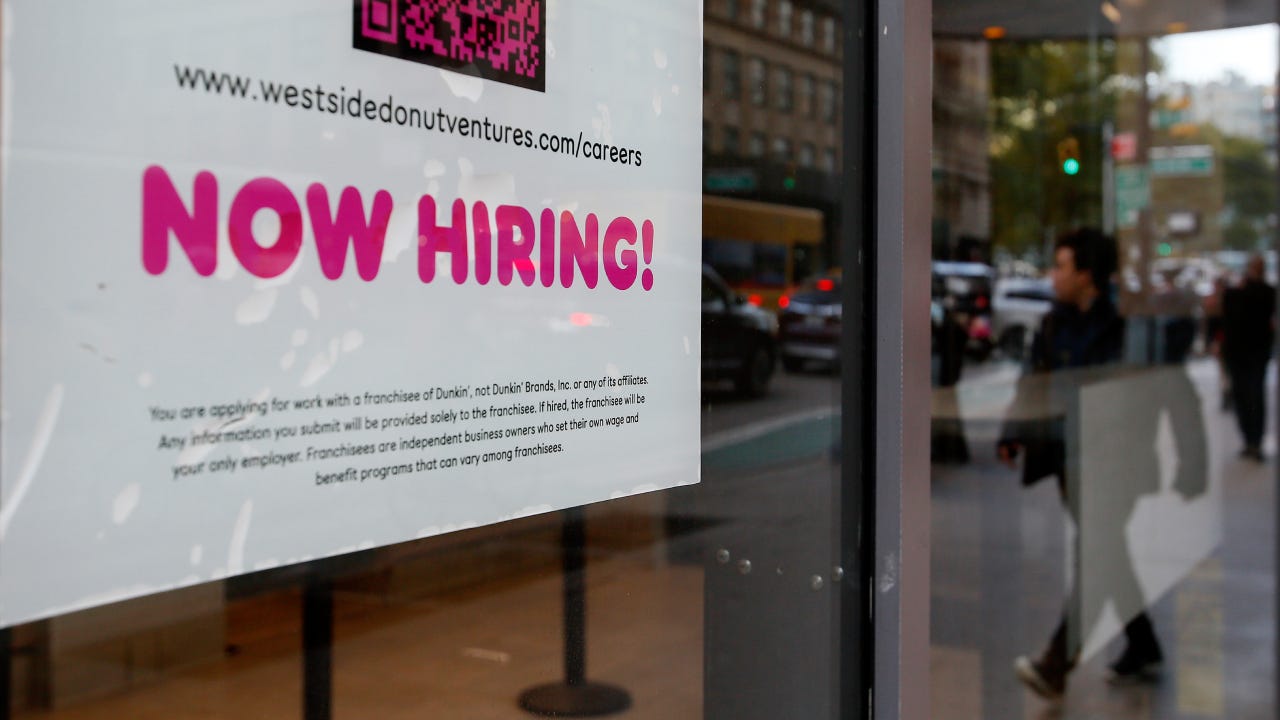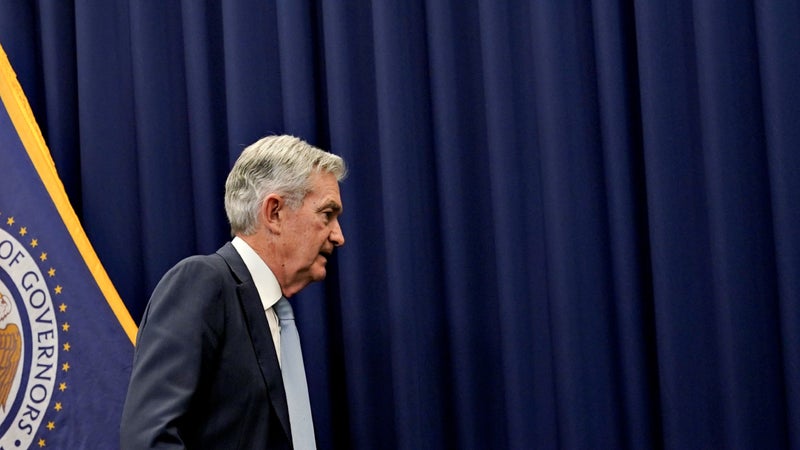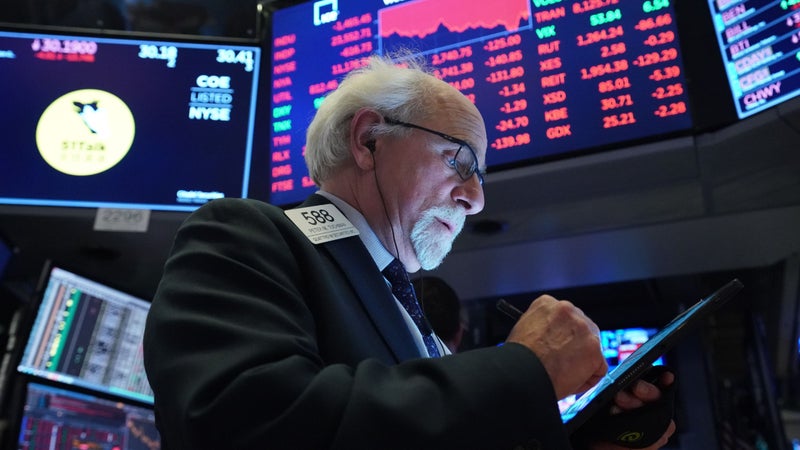Survey: Economists see slower hiring and more unemployment in 2023

The Bankrate promise
At Bankrate we strive to help you make smarter financial decisions. While we adhere to strict , this post may contain references to products from our partners. Here's an explanation for .
The booming job market that’s helped consumers reap higher pay and better positions could be coming to an end this year, a casualty to the Federal Reserve’s rapid rate hikes.
The unemployment rate is predicted to surge to 4.6 percent, while employers are forecasted to add just 42,000 jobs each month over the next year, according to the average forecast among experts in Bankrate’s quarterly Economic Indicator poll. The survey asks the nation’s top economists on their forecasts for the job market, the Federal Reserve and inflation over the next 12 months.
Those projections show a dramatically worsened job market than the one workers are living through today. Joblessness is currently at a near-half century low of 3.7 percent, while businesses have added about 400,000 new positions on average over the past 12 months — almost 10 times faster than what economists say hiring will amount to in 2023. Unemployment has also never surged half a percentage point or more without the U.S. economy being in a recession. At the same time, a 4.6 percent unemployment rate would be the lowest of any downturn in history.
Given that inflation’s misery has been so widely shared across all sorts of individuals, households and businesses, the impacts of a possibly short and less severe recession could be relatively muted. That’s not to diminish the negative impacts of anyone’s job loss.
— Mark HamrickBankrate senior economic analyst
Key takeaways on the job market from Bankrate’s Fourth-Quarter Economic Indicator survey
- Economists project a 4.6% unemployment rate a year from now.
- Employers are expected to add an average of 42,000 jobs each month over the next year.
- Job growth over the past 12 months has averaged 400,000, according to the Department of Labor.
- The unemployment rate is 3.7% as of November.
Why the job market may not be as strong this year
Economists’ forecasts were in line with the Fed’s quarterly economic projections. Officials in December said they also expect unemployment to hit 4.6 percent in 2023.
Yet, the range of forecasts in Bankrate’s poll were slightly wider than the Fed’s. While the lowest projection among both experts and monetary policymakers called for a 4 percent unemployment rate 12 months from now, the highest forecast in Bankrate’s Economic Indicator poll was 5.4 percent. Officials’ estimates, meanwhile, topped out at 5.3 percent for 2023.
Before the recovery from the coronavirus pandemic, joblessness hadn’t hit 5.4 percent since March 2015, when the economy was still recovering from the financial crisis.
The slight variation suggests rate hikes could impact the labor market more than any Fed official expects. All but two Fed officials said risks to the unemployment rate were weighted to the upside, meaning joblessness has a much greater chance of soaring even higher than current projections show.
But workers may have a much bigger cushion protecting them from job loss than they did in any previous recession. Even after 4.25 percentage points of tightening in just a nine-month span, job openings are at a near-record, retreating only to 10.3 million from their 11.9 million high in May, according to the Labor Department. That’s still far outnumbering the amount of people who are out of work and looking for a position, with the ratio of jobs to unemployed persons 1.7-to-1, higher than it was pre-pandemic.
Although Fed Chair Jerome Powell has said massive labor demand might be keeping inflation elevated, it could also help prevent the Fed from hurting the labor market. Because employers still have an appetite to hire and joblessness is at a historically low level, they hope the labor market might be in a stronger position to weather higher interest rates. In the best case scenario, Powell and Co. hope the Fed can “soft land” the economy, subtracting from job openings as they raise rates rather than eliminating anyone’s job.
“Our working assumption is that the economy follows a ‘soft-landing’ path, even though the risks are obviously skewed downward given the rarity of successful soft landings,” says Mike Englund, chief economist at Action Economics. “We plan to only incorporate a recession into our forecasts when we see evidence in the monthly data that a downturn is likely, and incoming data are actually still tracking a respectable rate of growth.”
After pandemic-era lockdowns ended, businesses also remember how hard it was to hire people. Millions retired early, some never went back to work, while others job hopped during what’s often been dubbed a “Great Resignation” of workers. Economists also speculate that the mismatch between labor supply and labor demand could make employers hesitant to lay off swaths of the labor force if a recession does hit.
Firms are also still recovering workers in high-demand industries.
“The labor market is about 3.8 million jobs shy of the pre-pandemic trend, and many of those missing jobs are in vital industries — such as healthcare and government — that create a labor vacuum that employers need to fill,” says Robert Frick, corporate economist at the Navy Federal Credit Union. “We can’t discount that we’re still more than one million jobs shy of trend in leisure and hospitality, and Americans’ desire for fun, food and travel shouldn’t be discounted.”
The biggest deal breaker for the labor market is how high rates have to rise before Fed officials think they’ve done enough to beat inflation. Once price pressures start to settle back around the U.S. central bank’s 2 percent target, officials have said they’d be willing to start reducing interest rates, giving some steam back to the economy.
The only problem is, it might take a while for those rate cuts to take the edge off of an economic downslide — not dissimilar to how long it’s taken higher rates to cool inflation.
“Since the labor market responds to rate changes with a lag, even when the Federal Reserve begins to cut rates at the end of the year, some companies will decrease headcounts into 2024,” says Yelena Maleyev, economist at KPMG.
Hear from the experts
Job gains, though in diminishing numbers, will continue into the first part of 2023. Higher interest rates will be taking their toll and job gains will turn into job losses by summer of 2023 and increase throughout the year.
— Bernard Markstein, president and chief economist, Markstein Advisors
The Federal Reserve is tightening monetary policy to curtail demand and slow inflation. Next year, it will be increasingly difficult to continue to fight inflation so intensely without broader impacts on employment. As excess consumer savings cushions slowly deflate in 2023, consumers should begin to pull back on spending, which may slow labor demand through declining job openings, and to a lesser extent, job losses.
— Odeta Kushi, deputy chief economist, First American Financial Corporation
Job growth will still occur given the high job opening vacancies. But it is remarkably slow compared to likely growth in the labor force. By the year-end, we may end the bizarre situation of more job openings compared to the unemployed that has been persistent since the ending of the covid-lockdown.
— Lawrence Yun, chief economist, National Association of Realtors
Methodology
The Fourth-Quarter 2022 Bankrate Economic Indicator Survey of economists was conducted Dec. 12-19. Survey requests were emailed to economists nationwide, and responses were submitted voluntarily online. Responding were: Ryan Sweet, chief economist, Oxford Economics; Yelena Maleyev, economist, KPMG LLP; Odeta Kushi, deputy chief economist, First American Financial Corporation; Lawrence Yun, chief economist, National Association of Realtors; Scott Anderson, executive vice president and chief economist, Bank of the West; Bernard Markstein, president and chief economist, Markstein Advisors; Mike Englund, chief economist, Action Economics; John E. Silvia, founder and president, Dynamic Economic Strategies; Robert Frick, corporate economist, Navy Federal Credit Union; Dante DeAntonio, director of economic research, Moody’s Analytics; Nayantara Hensel, PhD, senior economic advisor, Seaborne Defense LLC; Gregory Daco, chief economist, EY; and Bill Dunkelberg, chief economist, National Federation of Independent Businesses.


